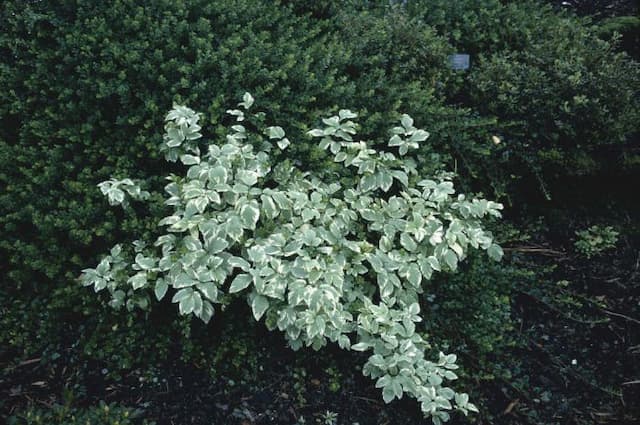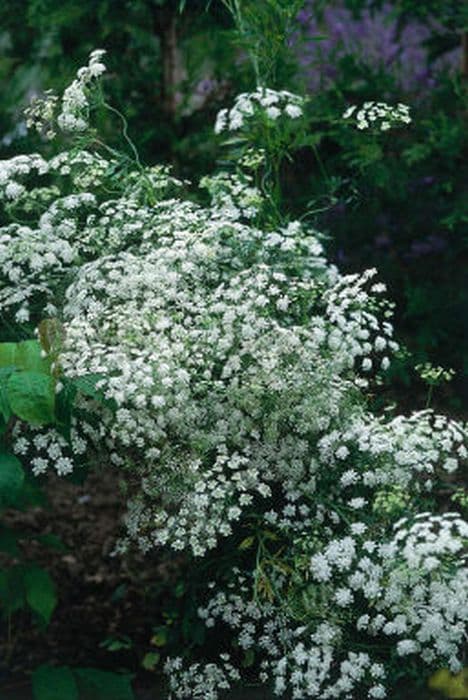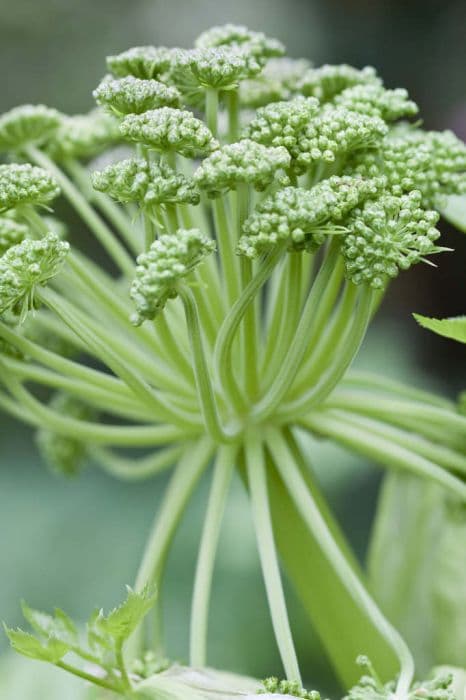Carrot 'Purple Haze' Daucus carota 'Purple Haze'

ABOUT
'Purple Haze' is an F1 hybrid carrot producing smooth, heavy roots with deep purple skins and orange cores reaching up to 25cm long
About this plant
 Names
NamesFamily
Apiaceae
Synonyms
Purple Haze Carrot, Purple Carrot
Common names
Daucus carota 'Purple Haze'.
 Characteristics
CharacteristicsLife cycle
Biennials
Foliage type
Deciduous
Color of leaves
Green
Flower color
White
Height
3 feet (0.91 meters)
Spread
1 foot (0.3 meters)
Plant type
Herb
Hardiness zones
3
Native area
Europe
Benefits
 General Benefits
General Benefits- Aesthetic Appeal: The 'Purple Haze' carrot has a striking purple exterior and a bright orange interior, which adds a unique and vibrant touch to gardens and meals.
- Nutritional Value: Rich in vitamins and minerals, it provides essential nutrients for a balanced diet.
- Pollinator Attraction: The flowers can attract beneficial insects, such as bees, which are important for pollination of other plants in the garden.
- Educational Interest: The unusual coloration of 'Purple Haze' carrots can be used as an educational tool to spark interest in horticulture and healthy eating, especially among children.
- Culinary Versatility: This variety can be used in a wide range of dishes, from raw snacks to cooked meals, adding color and flavor to the plate.
- Ease of Cultivation: 'Purple Haze' is known for being relatively easy to grow, suitable for both experienced and novice gardeners.
 Medical Properties
Medical Properties- Rich in Antioxidants: Purple carrots contain high levels of anthocyanins and beta-carotene, which have antioxidant properties that may help protect against free radical damage.
- Eye Health: The beta-carotene, which is a precursor to vitamin A, is important for maintaining good vision and eye health.
- Cardiovascular Support: The antioxidants and fiber in purple carrots may contribute to improved heart health by reducing cholesterol levels and providing cardiovascular support.
- Anti-inflammatory Properties: Compounds found in purple carrots may have anti-inflammatory effects, which can be beneficial for reducing the risk of chronic diseases.
- Digestive Health: As a source of fiber, purple carrots can support digestive health and promote regular bowel movements.
- Reducing Cancer Risk: Some studies suggest that the phytochemicals in purple carrots might have anticancer properties, although more research is needed in this area.
 Air-purifying Qualities
Air-purifying QualitiesThis plant is not specifically known for air purifying qualities.
 Other Uses
Other Uses- As a natural dye: The 'Purple Haze' carrot can be used to provide a purple or pink hue to fabrics and yarn when used as a dye, creating unique clothing or craft items.
- In photography: Photographers may use the striking purple color of the Purple Haze carrots in still life photography to add contrast and visual interest.
- Plant pigmentation studies: The variety can be used in botanical or genetic studies focusing on the inheritance and expression of pigmentation in root vegetables.
- As an additive in handmade paper: Dried and ground, the purple roots can be mixed with paper pulp to introduce texture and color to handmade papers.
- In cut flower arrangements: Though primarily grown for its roots, the feathery green foliage and flowers of the carrot plant can add unique texture to floral displays.
- For ecological purposes: Carrots with their deep roots can help to break up compact soil, improving soil structure for future plantings in the same space.
- In culinary arts education: Unique carrot varieties like Purple Haze can be used to teach about biodiversity and the importance of preserving heirloom vegetables.
- As living art: Some gardeners may plant 'Purple Haze' carrots in patterns or designs to create visually artistic vegetable gardens.
- For pet treats: While not unusual for all vegetables, Purple Haze carrots can be dehydrated to make natural, color-rich treats for pets like dogs.
- As a colorant in artisanal products: The juice from Purple Haze carrots can be used to naturally color soaps, bath bombs, and other personal care items.
Interesting Facts
 Feng Shui
Feng ShuiCarrot is not used in Feng Shui practice.
 Zodiac Sign Compitability
Zodiac Sign CompitabilityCarrot is not used in astrology practice.
 Plant Symbolism
Plant Symbolism- Fertility: The Daucus carota, commonly known as carrot, is often associated with fertility due to its prolific nature and the plant's rapid growth of its root, which is a symbol of abundance.
- Grounding: As a root vegetable, the carrot symbolizes grounding and connection to the earth, suggesting stability and a down-to-earth nature.
- Protection: In folk beliefs, carrots were sometimes used to protect against both physical and supernatural harm, possibly because their vigorous growth was seen as a potent life force.
- Health: The carrot's rich nutritional value, particularly its high content of beta-carotene (a source of Vitamin A), makes it a symbol of health and well-being.
 Water
WaterPurple Haze carrots should be watered regularly to maintain moist soil, particularly during dry spells, as carrots have a relatively small root system that doesn’t reach deep into the soil. Provide one inch of water per week, either through rainfall or supplemental watering. It is best to apply water directly to the soil, rather than overhead watering, to prevent fungal leaf diseases. In hotter climates or during periods of drought, additional water may be needed, so check the soil moisture frequently. Avoid overwatering, as too much water can lead to root rot.
 Light
LightPurple Haze carrots require full sun, which means they need at least 6 to 8 hours of direct sunlight each day. Choose a spot in the garden that receives unobstructed sunlight throughout the day for optimal growth. Avoid planting in shady areas, as insufficient light can result in poor root development.
 Temperature
TemperaturePurple Haze carrots thrive best in cooler temperatures, with the ideal growing range between 60°F and 75°F. They can tolerate temperatures as low as 40°F and as high as 85°F. Carrots sown in temperatures that are too high may lead to poor germination rates.
 Pruning
PruningPruning, in the case of Purple Haze carrots, refers to thinning the seedlings to prevent overcrowding. Thin seedlings when they are an inch tall, leaving 2-3 inches of space between plants. The best time to thin is in the evening or on a cloudy day to reduce stress on the remaining plants.
 Cleaning
CleaningAs needed
 Soil
SoilPurple Haze carrot prefers well-draining soil rich in organic matter with a pH between 6.0 and 7.0. A mixture of three parts garden soil, two parts compost, and one part sand or perlite provides an ideal growing medium for this root vegetable.
 Repotting
RepottingPurple Haze carrots do not require repotting as they are typically sown directly into the garden and harvested the same year; they are not repotted due to their annual life cycle.
 Humidity & Misting
Humidity & MistingPurple Haze carrot, commonly known as Purple Haze, thrives in outdoor environments where humidity is naturally present but does not require any specific humidity levels to grow successfully.
 Suitable locations
Suitable locationsIndoor
Grow Purple Haze carrot in deep pots with ample light.
Outdoor
Plant Purple Haze carrots in full sun, loose soil.
Hardiness zone
3-10 USDA
 Life cycle
Life cycleDaucus carota 'Purple Haze', commonly known as Purple Haze Carrot, begins its life cycle with seed germination, typically in the cool temperatures of early spring or fall. After germination, the plant enters the vegetative stage, where it grows a rosette of leaves and develops a long taproot. The taproot, which is the edible carrot, reaches maturity and can be harvested when it achieves the desired size, usually within three to four months after planting. If left unharvested, the plant will enter the flowering stage in its second year, producing umbels of white flowers that attract pollinators. After flowering, seeds will develop and eventually disperse, completing the life cycle and potentially giving rise to new plants if the conditions are right. Purple Haze Carrot is a biennial plant, completing its full life cycle in two years.
 Propogation
PropogationPropogation time
Spring-Early Summer
Propogation: Daucus carota 'Purple Haze', commonly known as Purple Haze carrots, are typically propagated through the process of sowing seeds. The best time to propagate Purple Haze carrots is in the spring, after the last frost when the soil temperature has reached at least 45 degrees Fahrenheit (7 degrees Celsius). To propagate by seeds, prepare a well-draining soil bed in a sunny location and scatter the seeds thinly along the surface, covering them with a fine layer of soil about 1/4 inch (6 millimeters) deep. Keep the soil moist but not waterlogged to encourage germination, which usually takes 1 to 3 weeks. Thinning the seedlings is crucial once they are a few inches tall to allow for proper root development, spacing them about 2 to 3 inches (5 to 7.5 centimeters) apart. Since carrot seeds can be slow to germinate, some gardeners mix them with quick-sprouting radish seeds to mark the rows and help break the soil surface, making it easier for the carrot seedlings to emerge.









